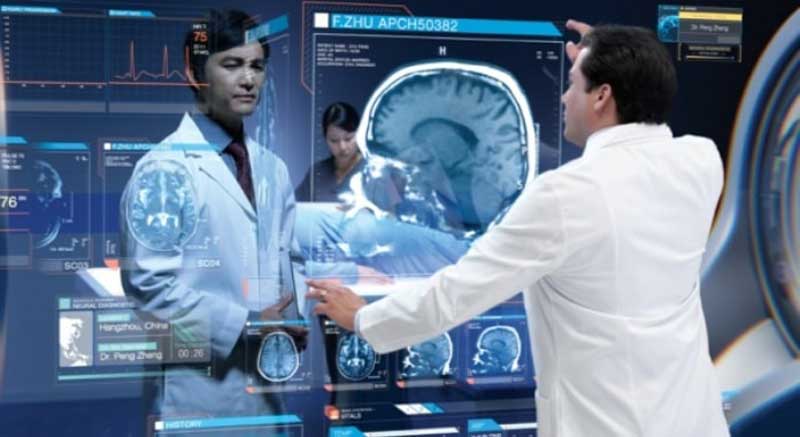he future of healthcare in What Is The Future Of Healthcare In The United States the United States is a dynamic and evolving landscape, shaped by technological advancements, policy changes, demographic shifts, and societal needs. As we look ahead, several key trends and innovations promise to transform how healthcare is delivered, accessed, and managed.
What Is The Future Of Healthcare In The United States
1. Technological Innovations
The integration of technology into healthcare is one of the most significant drivers of change. Telemedicine has gained widespread acceptance, accelerated by the COVID-19 pandemic. What Is The Future Of Healthcare In The United States this mode of healthcare delivery allows patients to consult with healthcare providers remotely, increasing access to care, especially in rural and underserved areas. Telehealth services are expected to continue expanding, offering more specialized care and leveraging technologies like high-definition video conferencing, remote monitoring devices, and mobile health apps..Follow for more interesting bloggs visit Blow Foam
Artificial Intelligence (AI) and machine learning are revolutionizing diagnostics and treatment planning. AI algorithms can analyze vast amounts of data to identify patterns and predict health outcomes, assisting clinicians in making more accurate diagnoses. AI-powered tools are also being developed to personalize treatment plans, taking into account individual patient data such as genetics, lifestyle, and health history. Robotics and automation are enhancing What Is The Future Of Healthcare In The United States surgical precision and efficiency, reducing recovery times and improving patient outcomes.
2. Personalized Medicine
The shift towards personalized medicine is transforming healthcare from a one-size-fits-all approach to more tailored treatments. Advances in genomics and biotechnology are enabling the development of therapies that are specifically designed to match an individual’s genetic profile. This personalized approach can improve the efficacy of treatments and reduce adverse effects. For instance, targeted therapies for cancer are designed to attack specific genetic mutations within tumors, leading to more effective and less toxic treatments.
3. Value-Based Care
The transition from volume-based to value-based care is reshaping the healthcare landscape. Value-based care focuses on providing high-quality care and improving patient outcomes while controlling costs. Healthcare What Is The Future Of Healthcare In The United States providers are incentivized to deliver care that is efficient, effective, and patient-centered. This model emphasizes preventive care, chronic disease management, and coordinated care across different providers and settings.
Accountable Care Organizations (ACOs) and patient-centered medical homes (PCMHs) are examples of initiatives aimed at implementing value-based care. These models encourage collaboration among healthcare What Is The Future Of Healthcare In The United States providers to improve patient outcomes and reduce unnecessary hospitalizations and emergency room visits. By focusing on outcomes rather than the number of services provided, value-based care aims to create a more sustainable and effective healthcare system.
4. Data-Driven Decision Making
The proliferation of electronic health records (EHRs) and health information exchanges (HIEs) has led to an explosion of health data. Leveraging this data for decision making is critical for improving healthcare delivery. Big data analytics allows for the analysis of large datasets to identify trends, improve population health management, and support clinical decision making.
Predictive analytics can help identify patients at risk What Is The Future Of Healthcare In The United States for certain conditions and intervene early to prevent disease progression. Population health management tools use data to identify high-risk populations, track health outcomes, and allocate resources more effectively. Additionally, real-time data monitoring can enhance patient safety by identifying potential issues before they become critical.
5. Consumer Empowerment
Patients are becoming more active participants in their healthcare, driven by greater access to information and digital health tools. Wearable devices and health apps enable individuals to monitor their healthWhat Is The Future Of Healthcare In The United States metrics, such as heart rate, physical activity, and sleep patterns, in real time. This data can be shared with healthcare providers to inform care decisions and support self-management of chronic conditions.
Healthcare consumers are also seeking more transparency and convenience. Price transparency initiatives aim to provide patients with information about the cost of services, enabling them to make more informed choices. Retail clinics and urgent care centers are expanding access to care, offering convenient, on-demand services outside of traditional office hours.
6. Policy and Regulation
Healthcare policy and regulation will continue to play a crucial role in shaping the future of healthcare in the United States. The Affordable Care Act (ACA) and subsequent policy changes have had significant impacts on healthcare access and coverage. Ongoing debates around healthcare reform, including proposals for a public option or single-payer system, What Is The Future Of Healthcare In The United States will influence the structure and financing of healthcare delivery.
Regulatory frameworks will need to adapt to keep pace with technological advancements and ensure the safety, efficacy, and privacy of new healthcare solutions. Policies promoting interoperability of health information systems are essential for seamless data exchange and coordinated care.
Conclusion
The future of healthcare in the United States is poised for significant transformation, driven by technological advancements, personalized medicine, value-based care, data-driven decision making, consumer empowerment, and evolving policy landscapes. These changes hold the promise of improving health outcomes, enhancing patient experiences, What Is The Future Of Healthcare In The United States and making healthcare more efficient and accessible. However, realizing this potential will require collaboration among stakeholders, investment in innovation, and a commitment to addressing disparities and ensuring equitable access to care for all.





